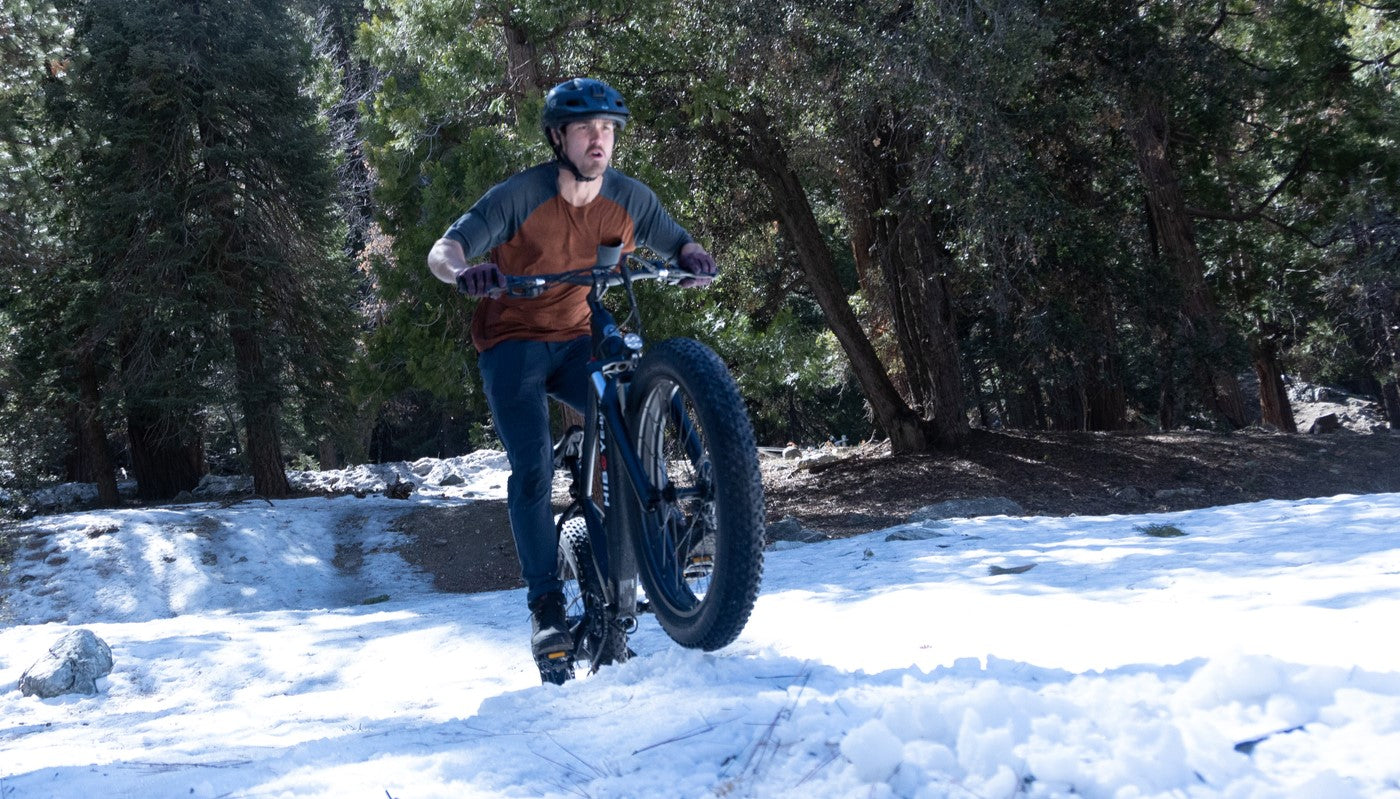As the temperature drops and snowflakes begin to fall, many e-bike enthusiasts may be tempted to store their trusty rides away until spring. However, with the right preparation and knowledge, winter e-biking can be a safe, enjoyable, and practical way to commute or enjoy the outdoors. This comprehensive guide will explore essential anti-slip tips and techniques to help e-bike owners navigate winter conditions confidently and securely.
Challenges of Winter E-Biking
Reduced Traction and Visibility
Winter brings unique challenges for e-bike riders. Icy roads, snow-covered paths, and wet surfaces significantly reduce traction, making it harder to maintain control of your e-bike. Additionally, shorter daylight hours and inclement weather can impair visibility, increasing the risk of accidents.
Battery Performance in Cold Weather
E-bike batteries are sensitive to temperature changes. Cold weather can reduce battery capacity and overall performance, potentially leaving riders stranded in challenging conditions. Understanding how to manage your e-bike's battery in winter is crucial for a safe and reliable ride.
Essential Anti-Slip Gear for Winter E-Biking
Choosing the Right Tires
One of the most critical factors in maintaining traction during winter rides is selecting appropriate tires. Consider the following options:
-
Studded tires: These tires feature metal studs embedded in the tread, providing excellent grip on icy surfaces.
-
Fat tires: Wider tires with lower pressure offer increased surface area contact, improving stability on snow and soft terrain.
-
Winter-specific tires: Designed with special rubber compounds and tread patterns to enhance traction in cold conditions.
Fenders and Mudguards
Installing fenders or mudguards on your e-bike helps prevent snow, slush, and water from splashing onto you and your bike's components. This not only keeps you drier and more comfortable but also reduces the risk of water freezing on critical parts of your e-bike.
Lights and Reflectors
With reduced daylight hours and potentially poor visibility due to snow or fog, proper lighting is essential. Invest in:
-
High-powered front and rear lights
-
Additional side lights or spoke lights for increased visibility
-
Reflective tape or stickers to enhance your visibility to others
Winterizing Your E-Bike
Weatherproofing Electronics
Protect your e-bike's electronic components from moisture and salt:
-
Apply dielectric grease to electrical connections
-
Use silicone sealant around junction boxes
-
Consider a neoprene cover for your battery and display unit
Lubricating Moving Parts
Cold temperatures can cause lubricants to thicken or freeze. Use a winter-specific, low-temperature lubricant on your e-bike's chain, derailleur, and other moving parts to ensure smooth operation and prevent rust.
Adjusting Tire Pressure
Slightly reducing tire pressure can improve traction on snow and ice. However, be cautious not to under-inflate, as this can lead to pinch flats or rim damage. Consult your tire manufacturer's recommendations for optimal winter pressure ranges.
Riding Techniques for Winter Conditions
Maintaining Proper Balance
Winter riding requires a different approach to balance and weight distribution:
-
Keep your weight centered over the bike
-
Avoid sudden movements or shifts in body position
-
Use a slightly lower seat position for increased stability
Braking Safely on Slippery Surfaces
Proper braking technique is crucial for avoiding skids and maintaining control:
-
Apply brakes gently and progressively
-
Use both front and rear brakes simultaneously
-
Anticipate stopping distances and begin braking earlier than usual
Navigating Icy Patches and Snow
When encountering particularly slippery areas:
-
Reduce speed before entering the hazardous area
-
Keep pedaling smoothly to maintain momentum
-
Avoid sudden turns or changes in direction
Battery Care and Management in Cold Weather
Insulating Your Battery
To maintain battery performance in cold conditions:
-
Use a neoprene battery cover or wrap
-
Store your battery indoors when not in use
-
Allow the battery to warm up before charging
Adjusting Riding Habits for Battery Conservation
Cold weather can reduce battery capacity. To maximize range:
-
Use a lower assist level when possible
-
Plan shorter routes or include charging stops on longer rides
-
Consider carrying a spare battery for extended trips
Regular Maintenance for Winter E-Biking
Post-Ride Cleaning
After each winter ride, take time to clean your e-bike:
-
Rinse off salt, sand, and grime with lukewarm water
-
Dry thoroughly, paying special attention to electrical components
-
Re-lubricate the chain and other moving parts as needed
Checking for Wear and Tear
Winter conditions can accelerate wear on certain components. Regularly inspect:
-
Brake pads for excessive wear
-
Tires for damage or embedded debris
-
Electrical connections for signs of corrosion
Professional Servicing
Consider scheduling a mid-winter tune-up with a professional e-bike mechanic to ensure all systems are functioning optimally in challenging conditions.
Safety Gear for Winter E-Bike Riders
Appropriate Clothing
Dressing appropriately is crucial for comfort and safety:
-
Layer clothing for insulation and moisture management
-
Use windproof and waterproof outer layers
-
Wear bright or reflective clothing for visibility
Protective Equipment
Don't forget essential safety gear:
-
A well-fitting helmet designed for cold weather
-
Goggles or glasses to protect eyes from wind and precipitation
-
Gloves that provide warmth without compromising grip and control
Planning Your Winter E-Bike Routes
Choosing Safe Paths
When planning your winter e-bike routes:
-
Stick to well-maintained paths and roads when possible
-
Be aware of areas prone to ice accumulation
-
Consider alternative routes that may offer better traction or protection from wind
Informing Others of Your Plans
Safety is paramount when winter e-biking. Always:
-
Let someone know your planned route and expected return time
-
Carry a fully charged cell phone for emergencies
-
Consider using a tracking app to share your location with trusted contacts
Conclusion: Embracing Winter E-Biking Safely
Winter e-biking presents unique challenges, but with proper preparation, equipment, and techniques, it can be a safe and enjoyable experience. By following these anti-slip tips and guidelines, e-bike owners can confidently navigate winter conditions, whether commuting to work or enjoying recreational rides.
Remember, safety should always be your top priority. If conditions become too severe or you feel uncomfortable, it's wise to seek alternative transportation. With practice and experience, you'll develop the skills and confidence to make the most of your e-bike year-round, even in the depths of winter.
"Winter e-biking isn't just about braving the elements; it's about smart preparation, respecting the conditions, and enjoying the unique beauty of the season from the saddle of your e-bike."
By implementing these strategies and maintaining a cautious, informed approach to winter riding, e-bike enthusiasts can extend their cycling season and discover the joys of cold-weather exploration on two wheels. Stay safe, stay warm, and enjoy the ride!










Partager:
How to Use an eBike to Hunt & Fish In Canada?
The Ultimate Guide to Cleaning Your E-Bike After Winter Riding